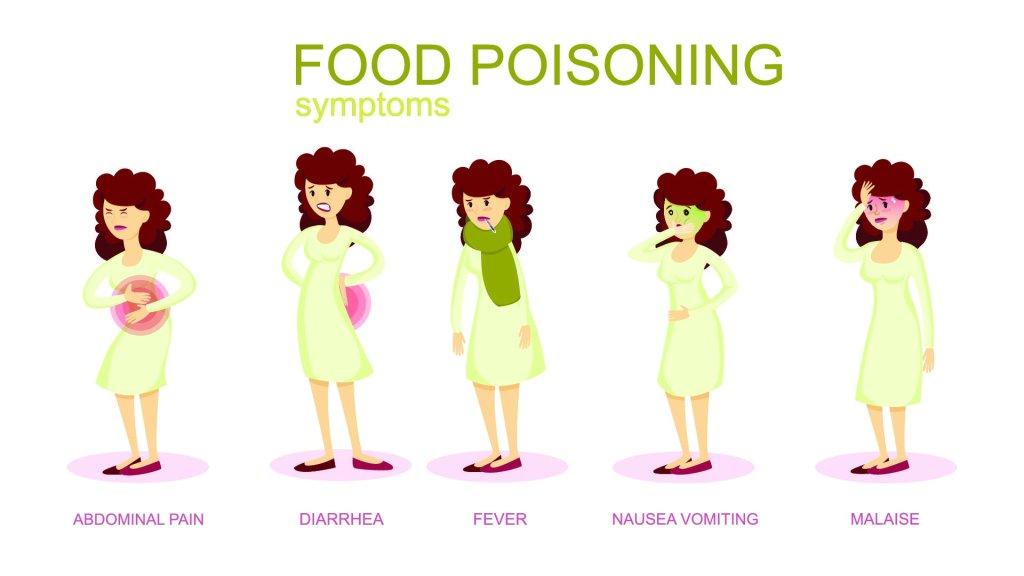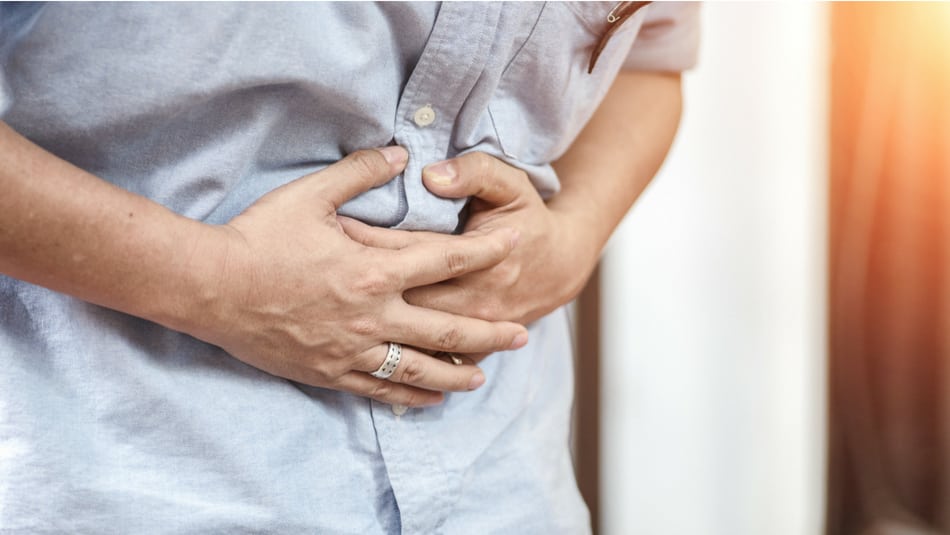Food poisoning is no fun. Even a mild case usually means hours of gastrointestinal distress and a bad case can mean a trip to the hospital. We generally blame food poisoning symptoms on the most recent meal, but that's not always the case. Given the outbreak of food poisoning stories and product recalls we've seen this year, let's take a closer look at the fun time known as food poisoning.
Videos by Wide Open Country
Food poisoning happens when you're infected by an organism like E. coli or Salmonella. The bacteria gets into your system and makes you sick with symptoms that can range from mild to severe, usually lasting from around 24 hours to several days (longer in the worst cases).

Not every stomach upset is technically food poisoning. You may have eaten something that is too fatty for your digestive system to easily process or you may have simply eaten too much. Another reason you may have symptoms like nausea or diarrhea is that you're having an allergic reaction to a certain food, or you may have just picked up the latest stomach flu going around.
For that reason, it can be hard to tell when you actually have food poisoning. Complicating the matter is that some of these infections can take days to show up and a couple of them can take weeks until you see symptoms. It takes time (usually 10-14 hours) for food to pass through your digestive system and it takes time for the infection to take root and grow.
In other words, it's possible that it was your last meal, but it's more likely that it was the meal before that (or even a meal from yesterday or the day before).
This chart from the United States Food and Drug Administration (FDA) shows the different types of infections and their incubation period; you can see that it varies a lot, even with the same bacteria.
| Organism | Common Name of Illness | Onset Time After Ingesting | Signs & Symptoms | Duration | Food Sources |
|---|---|---|---|---|---|
| Bacillus cereus |
B. cereus food poisoning | 10-16 hrs | Abdominal cramps, watery diarrhea, nausea | 24-48 hours | Meats, stews, gravies, vanilla sauce |
| Campylobacter jejuni |
Campylobacteriosis | 2-5 days | Diarrhea, cramps, fever, and vomiting; diarrhea may be bloody | 2-10 days | Raw and undercooked poultry, unpasteurized milk, contaminated water |
| Clostridium botulinum |
Botulism | 12-72 hours | Vomiting, diarrhea, blurred vision, double vision, difficulty in swallowing, muscle weakness. Can result in respiratory failure and death | Variable | Improperly canned foods, especially home-canned vegetables, fermented fish, baked potatoes in aluminum foil |
| Clostridium perfringens |
Perfringens food poisoning |
8-16 hours | Intense abdominal cramps, watery diarrhea | Usually 24 hours |
Meats, poultry, gravy, dried or precooked foods, time and/or temperature-abused foods |
| Cryptosporidium |
Intestinal cryptosporidiosis |
2-10 days | Diarrhea (usually watery), stomach cramps, upset stomach, slight fever | May be remitting and relapsing over weeks to months | Uncooked food or food contaminated by an ill food handler after cooking, contaminated drinking water |
| Cyclospora cayetanensis |
Cyclosporiasis | 1-14 days, usually at least 1 week | Diarrhea (usually watery), loss of appetite, substantial loss of weight, stomach cramps, nausea, vomiting, fatigue | May be remitting and relapsing over weeks to months | Various types of fresh produce (imported berries, lettuce, basil) |
| E. coli (Escherichia coli) producing toxin |
E. coli infection (common cause of "travelers' diarrhea") |
1-3 days | Watery diarrhea, abdominal cramps, some vomiting | 3-7 or more days | Water or food contaminated with human feces |
| E. coli O157:H7 | Hemorrhagic colitis or E. coli O157:H7 infection |
1-8 days | Severe (often bloody) diarrhea, abdominal pain and vomiting. Usually, little or no fever is present. More common in children 4 years or younger. Can lead to kidney failure. | 5-10 days | Undercooked beef (especially hamburger), unpasteurized milk and juice, raw fruits and vegetables (e.g. sprouts), and contaminated water |
| Hepatitis A | Hepatitis | 28 days average (15-50 days) | Diarrhea, dark urine, jaundice, and flu-like symptoms, i.e., fever, headache, nausea, and abdominal pain | Variable, 2 weeks-3 months | Raw produce, contaminated drinking water, uncooked foods and cooked foods that are not reheated after contact with an infected food handler; shellfish from contaminated waters |
| Listeria monocytogenes |
Listeriosis | 9-48 hrs for gastro-intestinal symptoms, 2-6 weeks for invasive disease | Fever, muscle aches, and nausea or diarrhea. Pregnant women may have mild flu-like illness, and infection can lead to premature delivery or stillbirth. The elderly or immunocompromised patients may develop bacteremia or meningitis. | Variable | Unpasteurized milk, soft cheeses made with unpasteurized milk, ready-to-eat deli meats |
| Noroviruses | Variously called viral gastroenteritis, winter diarrhea, acute non- bacterial gastroenteritis, food poisoning, and food infection | 12-48 hrs | Nausea, vomiting, abdominal cramping, diarrhea, fever, headache. Diarrhea is more prevalent in adults, vomiting more common in children. | 12-60 hrs | Raw produce, contaminated drinking water, uncooked foods and cooked foods that are not reheated after contact with an infected food handler; shellfish from contaminated waters |
| Salmonella |
Salmonellosis | 6-48 hours | Diarrhea, fever, abdominal cramps, vomiting | 4-7 days | Eggs, poultry, meat, unpateurized milk or juice, cheese, contaminated raw fruits and vegetables |
| Shigella |
Shigellosis or Bacillary dysentery | 4-7 days | Abdominal cramps, fever, and diarrhea. Stools may contain blood and mucus. | 24-48 hrs | Raw produce, contaminated drinking water, uncooked foods and cooked foods that are not reheated after contact with an infected food handler |
| Staphylococcus aureus |
Staphylococcal food poisoning | 1-6 hours | Sudden onset of severe nausea and vomiting. Abdominal cramps. Diarrhea and fever may be present. | 24-48 hours | Unrefrigerated or improperly refrigerated meats, potato and egg salads, cream pastries |
| Vibrio parahaemolyticus |
V. parahaemolyticus infection | 4-96 hours | Watery (occasionally bloody) diarrhea, abdominal cramps, nausea, vomiting, fever | 2-5 days | Undercooked or raw seafood, such as shellfish |
| Vibrio vulnificus |
V. vulnificus infection | 1-7 days | Vomiting, diarrhea, abdominal pain, bloodborne infection. Fever, bleeding within the skin, ulcers requiring surgical removal. Can be fatal to persons with liver disease or weakened immune systems. | 2-8 days | Undercooked or raw seafood, such as shellfish (especially oysters) |
This time lag in showing symptoms is one reason it's so difficult for the Centers for Disease Control and Prevention (CDC) to track outbreaks. It can take a week or more for local health officials to recognize that they have an outbreak because it takes that long for multiple cases to start showing up in doctor's offices or hospitals and then they have to trace back everything those people ate over the last week or more to find the common factor.
You can get food-borne illnesses by methods other than eating, too. For example, you pick up a fork off a counter where raw meat was prepared and then wasn't cleaned well. Even if you're not eating contaminated food, the fork and your hands now have bacteria on them and eventually, you're going to touch your mouth or nose, passing the bacteria into your system.
What food poisoning symptoms you do get and how severe they are depends a lot on you. Healthy adults may only notice a few minor symptoms, but children, older adults, and those with compromised immune systems or other medical conditions may have it worse.

According to The Mayo Clinic, the most common symptoms of food poisoning are nausea, vomiting, watery or bloody diarrhea, abdominal pain and cramps, and fever. The severe end of symptoms include not being able to keep liquids down for more than three days (which can lead to dehydration that causes more problems for your body), blood in your vomit or stools, a temperature higher than 100.4 F, blurry vision, and muscle weakness.
The best thing you can do if you have these symptoms is to contact your healthcare provider, especially if you have severe symptoms or are in an at-risk population. And if there's a local outbreak, your case can contribute to the body of knowledge that makes it possible to trace and stop the outbreak. You can also contact the FDA's Food Information Line at 1-888-SAFEFOOD or ask a question electronically.
Other things you can do to keep from getting food poisoning are washing your hands, practice good food safety (just because your potato salad is mayo and egg free doesn't mean you can leave it outside in hot weather for six hours), sanitize countertops, cutting boards, and utensils, and cook food properly.




